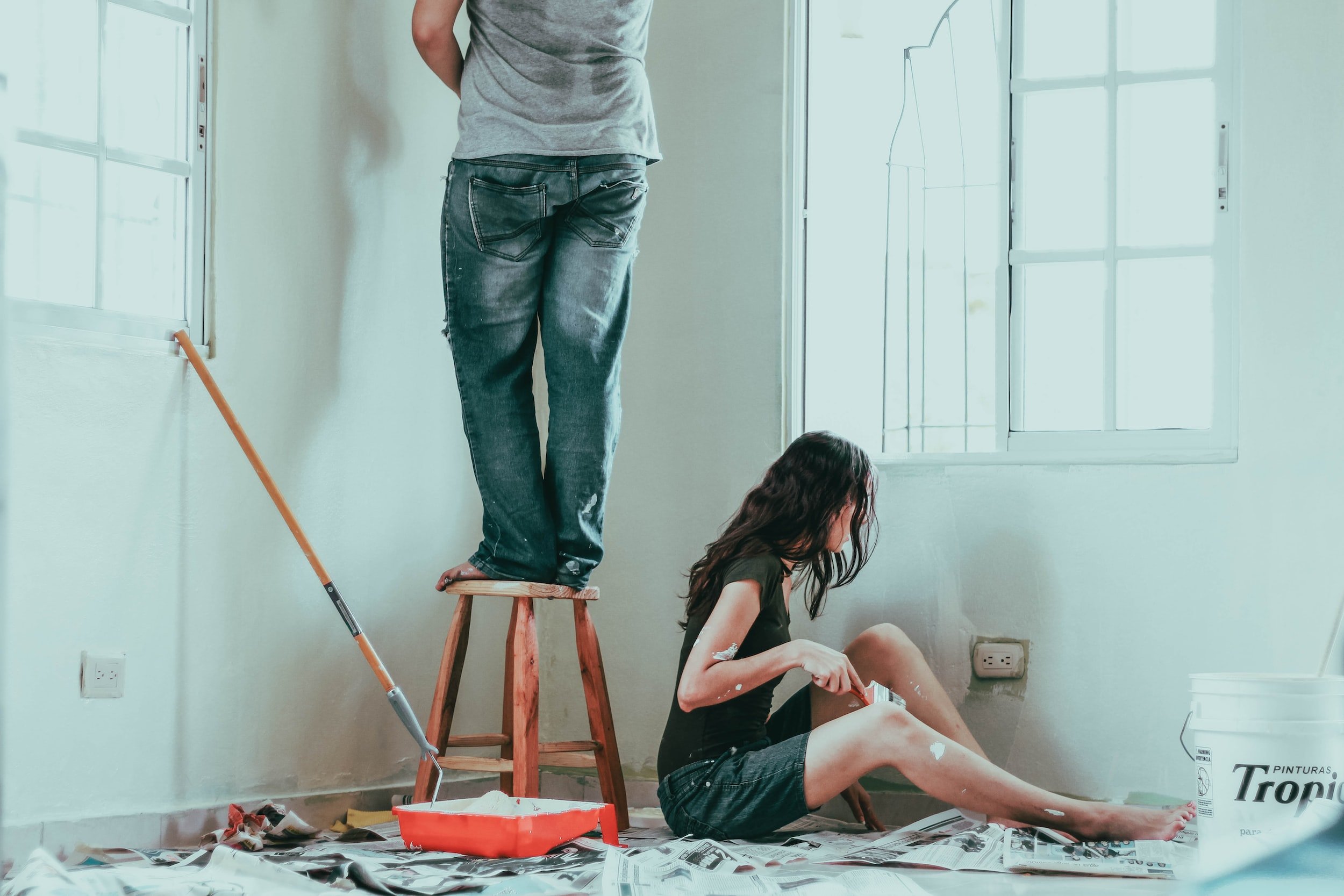How Long Should You Wait Between Paint Coats?
Whether you’re repurposing your spare room, decorating a nursery for your newest family member, or splurging on a complete home makeover, painting is likely high on your to-do list. After all, nothing makes more of a single-handed impact on a room than a fresh coat of paint. But before you get started, it’s important to know how long to wait between coats of paint to create the perfect finish.
At AJ Blunt, our expert painters are equipped with years of experience. We’ve harnessed their knowledge to create a helpful guide on the paint drying process and the optimal time between recoating. So put down that paintbrush and pay attention!
Why Paint Re-coat Time Matters
We’ve all heard the expression ‘like watching paint dry’, which describes something that is mind-numbingly boring. It’s no wonder so many amateur painters start painting over fresh paint well before they should. Biding time while your first coat of paint settles may seem tedious and long-drawn-out, but trust us - the result will be well worth the wait.
To understand the reason you need to wait between coats of paint (also known as ‘recoat time’), you’ll need a basic understanding of the paint drying process.
All paints, regardless of type, undergo evaporation and coalescence when drying. During evaporation, the majority of the liquid component of the paint turns into gas, and a solid film forms during coalescence. The paint is not considered to be completely dry until it has undergone both phases. If a second coat of paint is applied during either the evaporation or coalescence stage, the paint is likely to peel and streak, and form bubbles and pits when dry. Thus, it is important to wait a suitable amount of time between coats to ensure a polished finish.
What Are The Different Types Of Paint?
Paint drying time is influenced by the type of paint used. There are several different types of paints used in interiors, which can be broadly classified as either water-based or oil-based. Let’s take a look at the properties of both.
Water-based Paint
Water-based paints consist of a solvent that is almost entirely water, and they release very few volatile organic compounds (VOCs) during the evaporation phase of drying. These environmentally-friendly paints have a thinner and more flexible texture, meaning that they dry very quickly. They are typically touch-dry within 30 to 60 minutes, and recoat ready within two to three hours.
Water-based paints are ideal for interiors, exterior detailing, and heritage restorations.
Oil-based Paint
Oil-based paints are those that use an organic solvent; usually a mineral turpentine. With a thick, rigid texture when dry, these paints are highly resistant to damage (such as scratches and scuff marks) and can be applied even in adverse weather conditions or extreme temperatures. Oil-based paints are touch-dry within six to eight hours, and recoat ready within 16 to 20 hours.
Oil-based paints provide long-lasting results, and are ideal for the interiors and exteriors of residential housing.
What Are The Distinct Time Frames With Interior Painting?
There are three industry terms used to describe the stage of ‘dryness’ of a paint: ‘paint dry time’, ‘paint recoat time’, and ‘paint cure time’. Let’s take a look at each.
Paint Dry Time
‘Paint dry time’ refers to the time it takes for a paint to be touch-dry; when the surface of the coating can be touched or brushed lightly without the paint smudging or lifting. When paint is touch-dry, the majority of its solvent has evaporated, and it no longer appears wet.
Paint Re-coat Time
‘Paint re-coat time’ refers to the point at which the paint has dried thoroughly enough for another coat to be applied. Paint re-coat time takes a number of hours, but is significantly shorter for water-based paints.
Paint Cure Time
The final stage of paint drying is referred to as ‘paint cure time’. When paint is cured, it is fully dry and solidified, with all traces of its liquid solvent having evaporated. Paint cure time varies depending on the type of paint used, but typically occurs within 2 to 30 days. Only when paint is fully cured should its surface be washed/scrubbed.
What Are The Factors Affecting Drying Times?
Several environmental factors can influence the length of time it takes for paint to dry, as well as the texture of the paint itself. With an understanding of these factors, you’ll have a better idea of how long it will take to complete your painting project.
Temperature
Environmental temperature can significantly impact the drying time of paint. The ideal temperature for paint drying is between 15°C and 30°C. Higher temperatures can cause burning, bubbling, and other heat-related damage, while lower temperatures may prevent the paint from coalescing properly, resulting in adhesion failure and cracks to the paint’s film.
Ventilation
Adequate ventilation is essential for paint drying. However, strong wind or directed artificial air flow can result in cracking or wrinkling of the surface coating.
Humidity
When paint is exposed to high levels of water vapour, the liquid component of its solvent cannot evaporate easily. Thus, high humidity will slow the paint drying process. 70% to 80% humidity is ideal for paint drying.
Thickness
The thicker a paint is, the longer it will take to dry and cure. A thicker paint contains a greater volume of paint in a single coating, which will take longer to evaporate and coalesce. Oil-based paints are thicker than water-based paints, which is why they have a longer drying time.
Get In Touch With Our Professional Painters Today!
AJ Blunt is a family-owned business with a team of knowledgeable and experienced painting contractors ready to assist you with your next painting project. Contact us today to discuss your needs or to learn more about our services.


